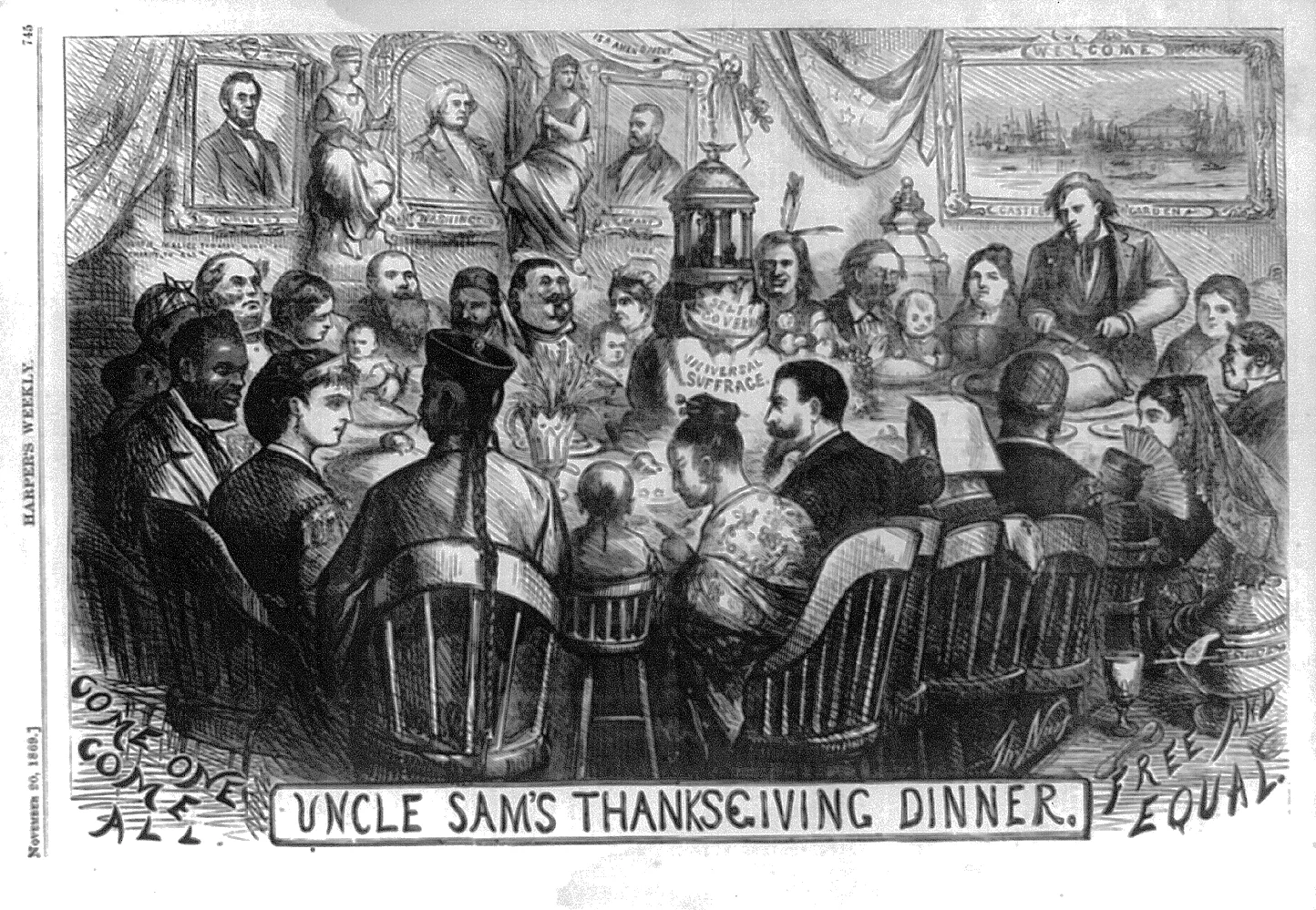
The Justice of the Take It Down Act
Congress and President Trump have imposed a measure of sanity on the web.
On May 19, President Donald Trump signed into law a bipartisan and widely supported bill that offers women hope that the federal government will help them reduce the risk of being victimized by two despicable modern-day phenomena: revenge porn and the computer-assisted creation of fake nude images with a real woman’s face. Authored by Senators Ted Cruz (R-TX) and Amy Klobuchar (D-MN), with more than 20 co-sponsors, the bill—S. 146 119th Cong. (2025)—was technically called the Tools to Address Known Exploitation by Immobilizing Technological Deepfakes on Websites and Networks Act, but is colloquially known as the Take It Down Act. The bill passed the Senate by unanimous consent and the House by a vote of 409-2. First Lady Melania Trump also deserves kudos for persuading Congress to make the nonconsensual display of such photographs a federal crime and to offer victims the ability to demand that they be removed from a website.
Nude photographs of women have existed and have been shared as long as cameras have existed and women have been willing to pose for a photographer. The two phenomena that have created the greatest problem for women, however, are the result of modern technology, particularly the creation of the Internet and the development of software that enables anyone to manufacture a fake nude image with the face of a real person. The practice known as revenge porn primarily victimizes young women in their teens and 20s who allow a boyfriend to photograph them in a risqué pose or who have such a photograph taken without their knowledge and consent. Revenge porn commonly occurs after a painful breakup, and the former boyfriend publishes a photo on the Internet to punish his now-former girlfriend. By contrast, the deepfake problem can happen when a woman has never met the photographer. Software allows the creation of a fake nude image to which the face of an actual person can be added, creating the appearance that the woman in the photo posed for the image.
Sharing such photographs predates the development of the World Wide Web. But the Internet enables people to post those photos in cyberspace, exponentially increasing their visibility and harm-producing ability. Atop that, as I wrote in 2014, “[l]ike an elephant, the Internet never forgets. Information potentially lives in ‘the cloud’ forever.” The inability to correct a past mistake—or what is worse, to halt continuing victimization given the continued availability of an image—turns an original sin into an eternal one and keeps women from leaving behind episodes in their lives they hope to forget. The publication, along with the knowledge that an unknown number of people will see it and the inability to erase the image from cyberspace, can be quite traumatic for its victims, particularly if they are teenage women. Some victims, unable to live with the attendant psychological pain, have committed suicide.
Some might argue that Congress should have left this problem to the states to resolve through tort law remedies. The flaw in that argument is that Congress is partially responsible for the occurrence of both types of odious behavior on the Internet. In 1996, Congress passed the Communications Decency Act (CDA) to permit websites to delete obscene or offensive material without incurring civil liability. The CDA stated that a website cannot be deemed “the publisher or speaker” of material posted online by someone else. Unfortunately, in 1997, the Supreme Court held in Reno v. ACLU that the CDA provision defining “offensive” speech was unconstitutional and severed that feature of the CDA from the remainder of the act, rather than holding the entire law unconstitutional. Ironically, an unintended consequence of that decision was to render websites immune from damages or injunctive relief for posting revenge porn if the website allows an image to be posted without editing or revising it. Victims of revenge porn therefore found themselves unable to sue a website to halt its ongoing publication of material that humiliates them before the world.
The Take It Down Act hopes to prevent, or at least diminish, the occurrence of such postings by adopting a federal remedial system. The act would make it a crime, punishable by imprisonment, fines, or both, to allow the posting of intimate visual depictions of nonconsenting parties, or to make “deepfakes” of such photos—computer-imposed transfers of Jane Doe A’s face onto the nude body of someone else. There are also civil enforcement provisions. One would empower victims to force a website to remove a nonconsensual visual depiction, which another provision would authorize the Federal Trade Commission to seek relief in federal court. This law might go a long way toward stemming this pernicious, disgusting practice.
It is a fantasy to believe that the Internet companies that allow posting those photos would be willing to help police this conduct without being subject to penalties. Writing in The New York Times recently, Nicholas Kristof asked, “What goes through the minds of people working at porn companies profiting from videos of children being raped?” The answer appears to be dollar signs. His article must be read to be believed.
Kristof reviewed “thousands of pages of internal documents from Pornhub,” dated “from 2020 or earlier.” The documents were meant to be sealed” for litigation but were not; they were “available “on a court website.” Some documents “show[ed] some employees laughing off what’s on their site,” others took a more “somber” tone, noting that “‘[t]here is A LOT of very, very obvious and disturbing CSAM [child sexual abuse material] here.’” Nor do the documents indicate that the company was responsive to requests to remove such material. As Kristof wrote, “One internal document indicates that Pornhub as of May 2020 had 706,000 videos available on the site that had been flagged by users for depicting rape or assaults on children or for other problems,” with a reason for that prevalence being that, as “the documents suggest, Pornhub did not necessarily review a video for possible removal until it had been flagged at least 16 times.” Kristof concluded, “[t]o me, the documents underscore how primal the pursuit of profits can be and why we should never trust tech companies to police themselves.” Congress did the right thing by intervening with this legislation.
Is the legislation constitutional? Yes. Consider each problem separately.
Start with revenge porn. As I have explained: “The essence of revenge porn is the Internet-posting of nude photographs of a former intimate partner for the purpose of subjecting her to public humiliation.” The publication is accomplished “through a betrayal of the trust that the victim had in her partner that he would never publicize the photographs.” Remedying that breach of trust does not violate the Free Speech Clause. The Supreme Court’s 1991 decision in Cohen v. Cowles Media Co. is directly on point.
There, a journalist for a newspaper assured Dan Cohen of confidentiality regarding any information that Cohen supplied him about a political candidate, but the newspaper later revealed that Cohen was its source. After he was fired, Cohen sued the newspaper for a breach of its confidentiality agreement. The newspaper maintained that the Free Speech Clause shielded it from liability for its broken promise. In an opinion by Justice Byron White, the Supreme Court expressly rejected that claim. As Justice White explained, newspapers have no Free Speech Clause shield against generally applicable, content-neutral laws such as the antitrust, tax, copyright, and labor laws. Those statutes can be applied to the media in the same manner that they apply to everyone else. The same was true, the Court decided, of a state’s law governing promissory estoppel. That doctrine “simply requires those making promises to keep them,” which does not infringe on freedom of expression because “[t]he parties themselves … determine the scope of their legal obligations.” Any restrictions on publishing truthful information under such circumstances are “self-imposed.”
That rationale fully applies in the case of revenge porn. Underlying the taking and exchange of a photograph of a woman partially clothed or nude is a tacit agreement between the woman and her boyfriend not to publish it or share it with anyone else. That tacit agreement goes as follows: May the photograph be taken? Yes. May the significant other photographer keep that photograph? Yes. May that significant other share the photo with others? No. May he publish the photograph on the Internet? Hell no! Therefore, the crux of this problem is the betrayal of that implied agreement not to publish the photo. There is no material difference between the promise of confidentiality in Cohen and one in a standard case of revenge porn. In each case, state tort law may provide a remedy for the breach of an assurance of confidentiality, and in neither case is there a risk of the type of censorship that the Free Speech Clause abhors. The law can penalize someone for breaching a promise regardless of what that promise entails. And, of course, the surreptitious taking of such a visual depiction and later publication of it on the Internet is a straightforward invasion of privacy without the need for a victim to prove a tacit agreement like the one summarized above.
The deepfake issue involves a different scenario. There, the malefactor takes a photograph of Jane Doe A, a girl or a woman, and, using available software, transfers the image of Jane Doe A’s face onto the nude body of someone else, say a Playboy centerfold, who has consented to that public depiction. Internet publication then follows. That scenario differs from the one examined in Cohen because there is no tacit agreement not to publish the face of Jane Doe A. Indeed, the photo of her face might be publicly available on the sports pages of a local newspaper. As such, there would be no claim for damages for a breach of confidentiality because there was no tacit agreement between any parties that the original facial photo would remain private.
But there may be a fraud claim.
The fake photograph is designed to persuade the viewer that the contrived photo shows more than Jane Doe A’s face when, in fact, it does not. The viewer is therefore defrauded into believing that Jane Doe A is someone else, and that fraud benefits the company operating the platform publishing the photo by attracting eyes to its photographs. Congress is entitled to prevent using the instrumentalities of interstate commerce to commit fraud, and the Free Speech Clause does not stand in Congress’s way. As the Supreme Court noted in Illinois ex rel. Madigan v. Telemarketing Associates, Inc., a long line of its precedents make it clear not only that “the First Amendment does not shield fraud,” but also that “the government's power ‘to protect people against fraud’ has ‘always been recognized in this country and is firmly established.’” Here, the deception is carried out using a photograph instead of words. But it is no less a falsehood done to generate “clicks” that can be turned into cash. That is old-fashioned fraud, and Congress may protect the public against it.
In sum, the practices of revenge porn and deepfake nude images are harms that the government may punish without trespassing on the Free Speech Clause. Congress and First Lady Melania Trump deserve kudos for trying to keep these awful practices from damaging the lives of women, especially young ones.
Paul J. Larkin is the John, Barbara & Victoria Rumpel Senior Legal Research Fellow at the Meese Center in The Heritage Foundation.
Politics

Building a Politics of Deliberation in the Tarheel State
The high price of destructive dialogue and the value of constructive engagement are among the few matters about which the coauthors of this article agree.

Can Cass Sunstein Save Liberalism?
Sunstein's analysis of liberalism fails to reach the live arguments about liberalism’s viability in a diverse and democratic republic.

William F. Buckley and the Politics of Normalcy
A guiding principle of Buckley’s National Review is that conservatives are on the side of ordinary Americans, not those addled with one insane mania or another.
Get the Civitas Outlook daily digest, plus new research and events.
Ideas for
Prosperity








